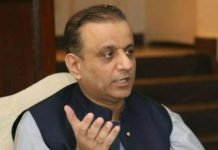By: Qamar Bashir
In their most recent publications, the IMF, Asian Development Bank and World Bank separately assessed the worth and outlooks of world economies, including Pakistan and India. These assessments present a diametrically opposed picture of the two South Asian giants. The International Monetary Fund (IMF) stated in its report released on May 11, 2023, while commenting on Pakistan’s economic outlook, that its team was very heavily engaged with Pakistani authorities, as Pakistan is facing a very challenging situation, the economy is experiencing stagflation, and it has very large financing needs.
It has been hit by a series of shocks, including particularly catastrophic floods, demanding significant additional funds to support policy measures that are stalled due to the failure to sign the IMF’s ninth assessment. It also stated that the economy is experiencing domestic and external imbalances, necessitating fiscal strengthening through permanent revenue measures and reductions in untargeted subsidies, scaling up social protection to assist the most vulnerable and flood victims, allowing the exchange rate to be market determined to gradually eliminate the foreign exchange shortage, and improving energy provision by preventing further accumulation of circular debt.
The same study concluded that “India is a bright spot, both for the global economy and, of course, for Asia.” India is rapidly expanding, and the IMF sees it as a crucial player in the region and a necessary support for the global economy.” “In terms of digital currency in India, the country is making rapid progress in developing a digital public infrastructure, which has improved financial inclusion, social inclusion, and has also aided in the delivery of healthcare services.” The IMF encourages non-performing economies to learn from India in order to improve their economy.
This Indian success story did not take millennia, but only fifteen years. India’s actual per-capita income was just under $600 when it launched economic reform in 1991. This figure has more than tripled. Over the last 15 years, an estimated 400 million people in India have been lifted out of poverty, representing one of the world’s fastest rates of poverty alleviation. In 1991, the country was one of the world’s top assistance receivers, but it is currently a net donor. It is also the world’s third largest economy in terms of purchasing power parity, contributing about 15% to global growth this year. Furthermore, with i
ts G20 presidency this year, India is taking the global lead. As such, its goal focuses on global public goods and improving international coordination in sectors such as debt, crypto assets, climate change, and digitalization. India accomplished this initially by gaining political stability while also developing democratic institutions, and later by implementing universal banking, adopting international best practices in regulation and supervision, and establishing the National Stock Exchange.
It also offered electronic trading, allowing larger enterprises to get access to market-based finance by utilizing both bond and equity markets. India has also pleased the international community by encouraging financial inclusion via its public digital infrastructure, with local firms using cellphones to execute the majority of financial transactions, resulting in better public finance management efficiency. The digital payment method enhanced general sales tax revenue collection while cutting enterprise tax compliance costs. This also helped the government send 37 billion dollars in social payments to people’s bank accounts between 2020 and 2021, bypassing expensive intermediaries and reducing leakages.
Asian Development Bank in its evaluation report issued on 4th April 2023 said that Pakistan’s economic growth is expected to slow significantly in FY2023 due to last year’s devastating floods, ballooning inflation, a current account deficit, and an ongoing foreign exchange crisis. It said that Pakistan GDP growth is projected to slow to 0.6% in FY2023 from 6% last fiscal year as it is struggling to recover, but may rise to 2% in FY2024, provided the resumption of macroeconomic stability, implementation of reforms, post-flood recovery, and improving external conditions. The repor
t added that the country is experiencing decelerated industrial growth resulting from fiscal and monetary tightening, a significant depreciation of the local currency and higher domestic oil and electricity prices. Average inflation rate is projected to more than double from 12.2% in FY2022 to 27.5% this fiscal year due to higher domestic energy prices, a weaker currency, flood-related disruptions to supply, and restraint on imports caused by the balance of payment crisis.
The same report while commenting upon India said that despite the global slowdown, India’s economic growth rate is stronger than in many peer economies and reflects relatively robust domestic consumption and lesser dependence on global demand. It added the Government of India’s strong infrastructure push under the Prime Minister’s Gati Shakti (National Master Plan for Multimodal Connectivity) initiative, logistics development, and industrial corridor development has contributed significantly to raising industrial competitiveness and boosting future growth.”
In a statement issued on April 4, 2023, the World Bank stated that Pakistan’s economy is expected to grow by only 0.4 percent in the current fiscal year ending June 2023, citing subdued private sector activity, deteriorating investors’ confidence, import controls, belated fiscal tightening, and the effects of the unprecedented floods of summer 2022. It stated that due to intrinsic economic vulnerabilities and consequent political uncertainty, Pakistan’s economy was unable to absorb shocks caused by disastrous floods, which increased global commodity prices following Russia’s invasion of Ukraine.
The bank also identified inconsistencies in policy responses, such as monetary tightening, new subsidies, and an informal exchange rate cap, as well as depletion of foreign exchange reserves, which was exacerbated by macro risks, tighter global liquidity conditions and a lack of access to international capital markets. According to the report, Pakistan faces rising debt, limited financial inflows, and record inflation. Private sector inactivity has drastically weakened consumer and investor confidence, and disruptions induced by administrative import limitations have caused the lower middle-income poverty rate to rise to 37.2 percent in FY23.
Same report while commenting on the Economic outlook of India said that although significant challenges remain in the global environment, India was one of the fastest growing economies in the world and “Notwithstanding external pressures, India’s service exports have continued to increase, and the current-account deficit is narrowing.” The inflation remained at 5.2 percent in FY23/24, India’s financial sector also remains strong, buoyed by improvements in asset quality and robust private-sector credit growth. The debt-to-GDP ratio is projected to stabilize, current account deficit is projected to narrow on the back of robust service exports and a narrowing merchandise trade deficit. The overall growth remains robust and is estimated to be 6.9 percent for the full year with real GDP growing 7.7 percent year-on-year during the first three quarters of fiscal year 2022/23.
These reports, has asked the failing economies to benchmark India’s best economic policies and have specifically asked Pakistan to introduce fundamental economic reforms to unlock fresh financing, avoid a balance of payments crisis and lay the foundation for a recovery of private investor confidence and higher growth over the medium term” . These reports have also cautioned Pakistani leadership to take IMF proposals seriously as the progress with the IMF-EFF program depends heavily on securing new official external financing as ongoing delays will contribute to a further deterioration of the investors confidence. It also advised Pakistan to maintain overall sound macroeconomic management, including a flexible exchange rate, controlling inflation through adoption of an appropriate monetary policy stance; increase revenues, rationalize expenditure (including reducing untargeted energy subsidies); and implement trade and private sector reforms to support improvements in investment, competitiveness, and productivity.
These findings are not novel or out of the box, neither are the solutions proposed by international financial institutions new or novel. These recommended policies are off-the-shelf solutions that are pushed and forced down the throats of all non-performing economies as a penalty for pursuing vested interests, spiteful and vendetta-based politics, and constantly battling fires without instituting long-term changes. These solutions are also pushed down the throats of economies where the focus is on settling personal scores and there is a lack of innovation, creativity, and original ideas, where national assets are looted to accumulate personal wealth, and where there is a lack of ability to settle and resolve the underlying causes of issues that cause political and social unrest. Where corruption is not an issue and institutions are hellbent on destroying one another in order to gain as much power, authority, and nuisance as possible. Where the constitution is shattered and laws are flagrantly violated with total impunity. Where the media is suppressed and civil society is terrified to express itself. Political dissent is punished, and the diversity of beliefs and opinions is effectively suppressed. But, because we are not such a country, we have the right to wonder why our economy is not performing.
Former Press Secretary to the President
Former Press Minister to the Embassy of Pakistan to France
Former MD, SRBC












